Part 1
My 13th Solar Eclipse –
My 8th successful
Total Eclipse in a row –
My 7th continent on the chase
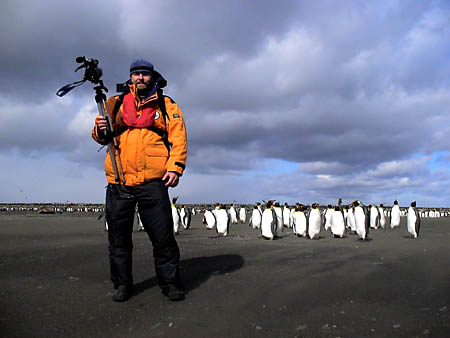
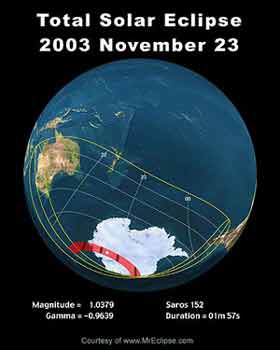 We made history! On this date, I was among the first humans to ever witness a total eclipse from Antarctica.
We made history! On this date, I was among the first humans to ever witness a total eclipse from Antarctica.
Along with one hundred passengers from 15 countries I journeyed 8,000 miles aboard the Russian icebreaker Kapitan Khlebnikov from Port Elizabeth, South Africa to Hobart, Tasmania. The month-long expedition took us to the far side of Antarctica – a location few people have ever visited. And as far as I know, we were the only marine expedition in the world to attempt an observation from the eastern ice shelf. During the three weeks we sailed south in the Indian Ocean, we landed at Crozet and Kerguelen Islands and visited with the thousands of King Penguins that colonize the sub-Antarctic islands. Arriving in the sea ice that surrounds the continent, we made our way east into the Davis Sea to try to find a spot in the path of totality. Unpredictable ice and weather were our daily concerns. The thick, fast ice had already prevented us from making two of our intended landings on the continent, and the cold, wind and clouds were showing no signs of letting up.
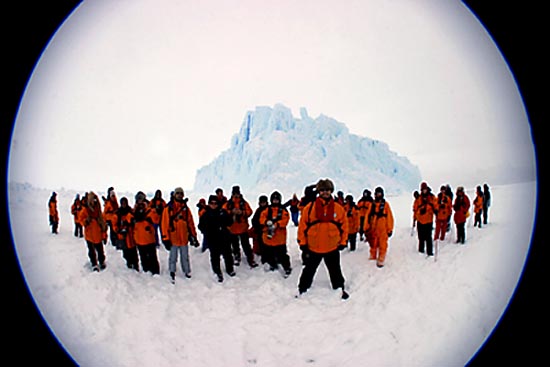 Eclipse chasers of the icebreaker Kapitan Khlebnikov explore the majestic landscapes of the Far Side.
Eclipse chasers of the icebreaker Kapitan Khlebnikov explore the majestic landscapes of the Far Side.Only six hours before the eclipse was to begin, the captain of the Khlebnikov found this shelf of sea ice and rammed the bow into its edge. Now safely “garaged” in the ice – and finally in the path of totality – we began the process of staking out the site.

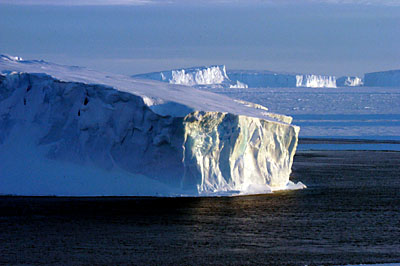 Within the hour, Expedition Staff had landing supplies on the ice. Eclipse chasers waited out the final few hours before the eclipse in the warmth of the ship before heading out to set up.
Within the hour, Expedition Staff had landing supplies on the ice. Eclipse chasers waited out the final few hours before the eclipse in the warmth of the ship before heading out to set up.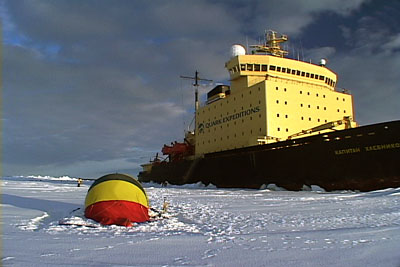 Russian icebreaker Kapitan Khlebnikov “garaged” in the sea ice, west of the Shackleton Ice Shelf.
Russian icebreaker Kapitan Khlebnikov “garaged” in the sea ice, west of the Shackleton Ice Shelf.Part 2
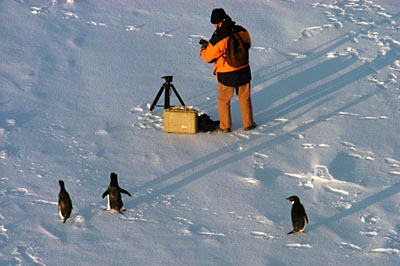 Curious locals wonder what all the fuss is about.
Curious locals wonder what all the fuss is about.Three hours before First Contact, groups of eclipse chasers begin setting up their equipment in anticipation of an event that has brought them to the bottom of the Earth and to the most unforgiving climate in the world.
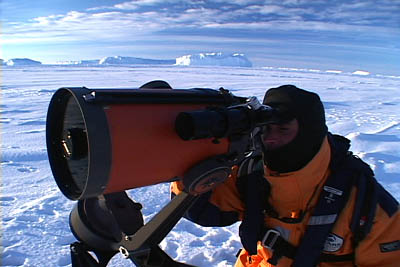 Didier Raboud from the University of Geneva aligns his equipment.
Didier Raboud from the University of Geneva aligns his equipment.In many ways, this eclipse was unique and it drew the attention of chasers around the world. In Iran, where astronomy has been practiced for thousands of years, the amateur community is made up of only a handful of enthusiasts. Babak A. Tafreshi and Hamid Khodashenas are the most dedicated of them, and were the only Iranians in the path of totality. Throughout the expedition, they sent daily reports back to Iran in an effort to raise awareness of astronomy in their home country.
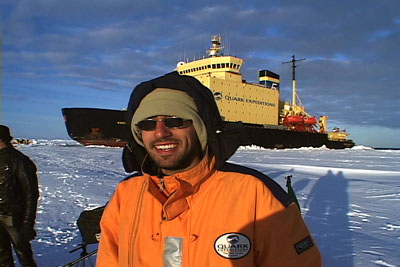 With all his equipment working in the freezing cold, Babak A. Tafreshi enjoys a moment during the pre-eclipse jitters.
With all his equipment working in the freezing cold, Babak A. Tafreshi enjoys a moment during the pre-eclipse jitters.The expedition was rich with learning and first-hand experiences in the Antarctic. Expedition specialists gave lectures on history, geography and ornithology, and thanks to astronomy advisors Fred Espenak from NASA’s Goddard Space Flight Center, and John Parkinson from Sheffield Hallam University in England, passengers had the opportunity to learn from the world’s best.
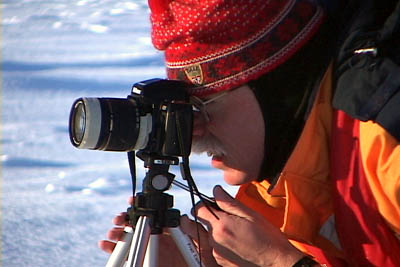 Eclipse veteran Fred Espenak is known for producing stunning eclipse images. This was Fred’s 18th total eclipse.
Eclipse veteran Fred Espenak is known for producing stunning eclipse images. This was Fred’s 18th total eclipse.Just before the eclipse began, I gave a live interview by Iridium satellite phone to Discovery Channel Canada for their live broadcast about the eclipse. Natasha Stillwell from ‘Daily Planet’ spoke to me about the conditions on the ice, our preparations for eclipse day, and about the people we had on board the ship. As the only Canadian eclipse chaser on the expedition, it was a real thrill to speak to my country about what we were experiencing.
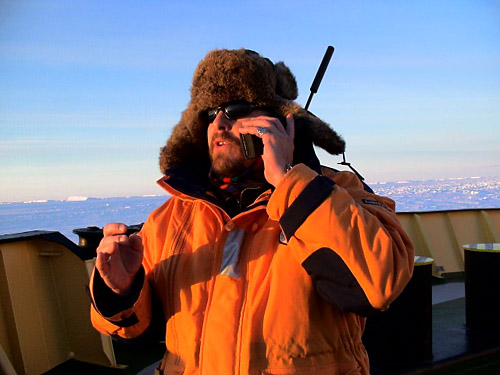 eclipseguy’s 4am phone call with Discovery Channel from the bow of the Khlebnikov!
eclipseguy’s 4am phone call with Discovery Channel from the bow of the Khlebnikov!Part 3
As you can see from the photo below, the clear skies we had enjoyed during set up quickly became threatened by a band of low, broken clouds from the north.
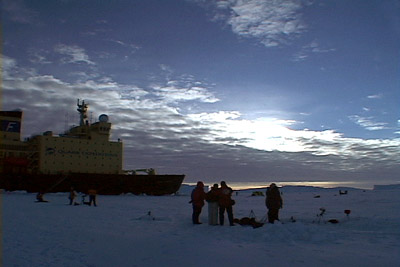 What you don’t want to see – clouds drifting in across the sun.
What you don’t want to see – clouds drifting in across the sun.The only possible benefit of clouds during an eclipse is that they act as a solar filter of sorts, here making it easier to observe and photograph the partial phases. But if they stay around too long they might eclipse the eclipse itself.
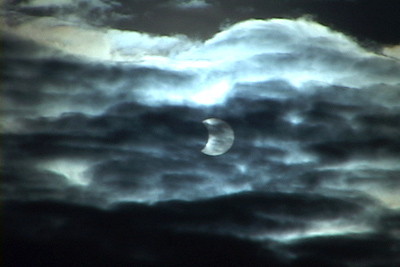 The eclipse chaser’s nightmare – ghostly clouds making an appearance once the show has begun.
The eclipse chaser’s nightmare – ghostly clouds making an appearance once the show has begun.This frame-grab from video shows what we saw through the clouds as Second Contact arrived. Not a complete cloud-out, but not as clear as we had hoped. If it wasn’t for the lucky placement of this small patch of transparent cloud we might have even seen less!
 A few Baily’s Beads expire as totality begins beyond the clouds.
A few Baily’s Beads expire as totality begins beyond the clouds.As mid-totality arrives the clouds have decided to stay diminishing our view of the corona. Unfortunately, these meager shots don’t do the experience justice. Yes – it was partly cloudy. But the real show wasn’t in the sky this time. It was all around us. The colour of the sky during totality was stunning, and the amazing pastel hues cast upon the valley of icebergs was something I had never seen before. And it was very dark. I don’t think I have ever seen the shadow move so quickly before. I had always thought that an eclipse was about the corona – but this eclipse taught me that this isn’t necessarily the case. I have more pictures and video to post later that show the amazing colours the umbra cast upon our temporary home in the ice.
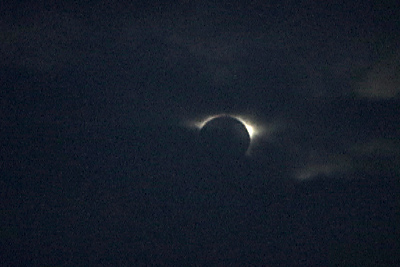 Enough to bring tears to your eyes. This was the most of the corona we observed during the fleeting 1 minute and 14 seconds we observed.
Enough to bring tears to your eyes. This was the most of the corona we observed during the fleeting 1 minute and 14 seconds we observed.Below is my best shot of totality with my 28mm lens. Look closely and you will see the totally eclipsed sun near the centre of the frame!
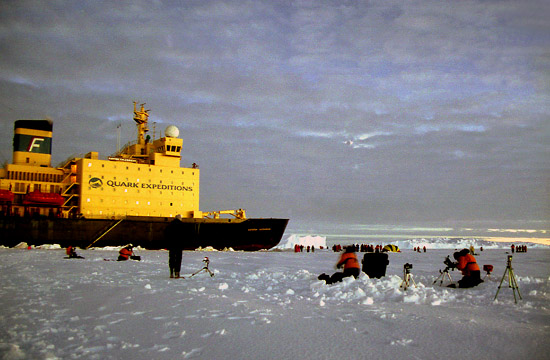 Totality on 23 November 2003 from east of the Shackleton Ice Shelf in Antarctica.
Totality on 23 November 2003 from east of the Shackleton Ice Shelf in Antarctica.Part 4
It is truly amazing how different cameras can capture different views of the same event. In this angle to the west, Loren Dolman has frozen totality in time. This is exactly what was visible to the naked eye.
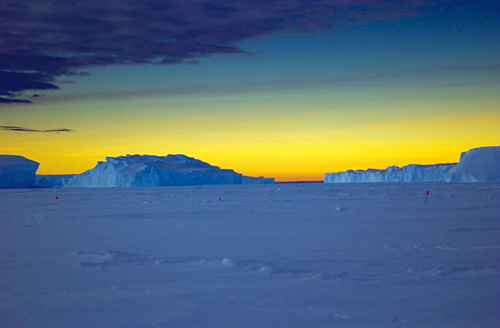 Loren Dolman’s great shot of what this eclipse was about for us – being in the umbra.
Loren Dolman’s great shot of what this eclipse was about for us – being in the umbra.The shadow races off across continental Antarctica – to a rendezvous with chasers at Novo Station.
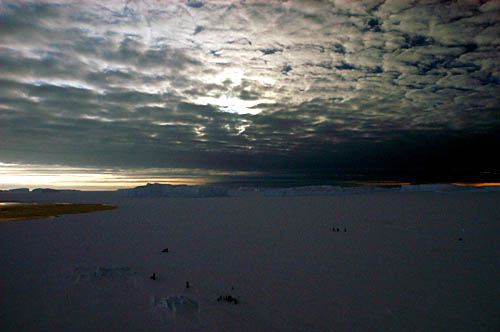 In this Luigi Boschin shot, the movement of the shadow across the tops of the clouds is striking.
In this Luigi Boschin shot, the movement of the shadow across the tops of the clouds is striking.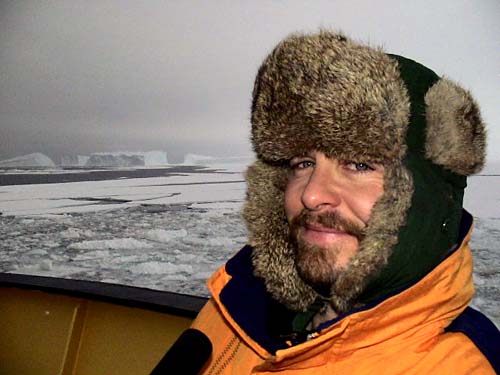
Thanks to Luigi Boschin, Loren Dolman, Rob Arnott and Peter Gronvall for sharing their images! Now I am busy organizing the next total eclipse chase. See you there??!!
